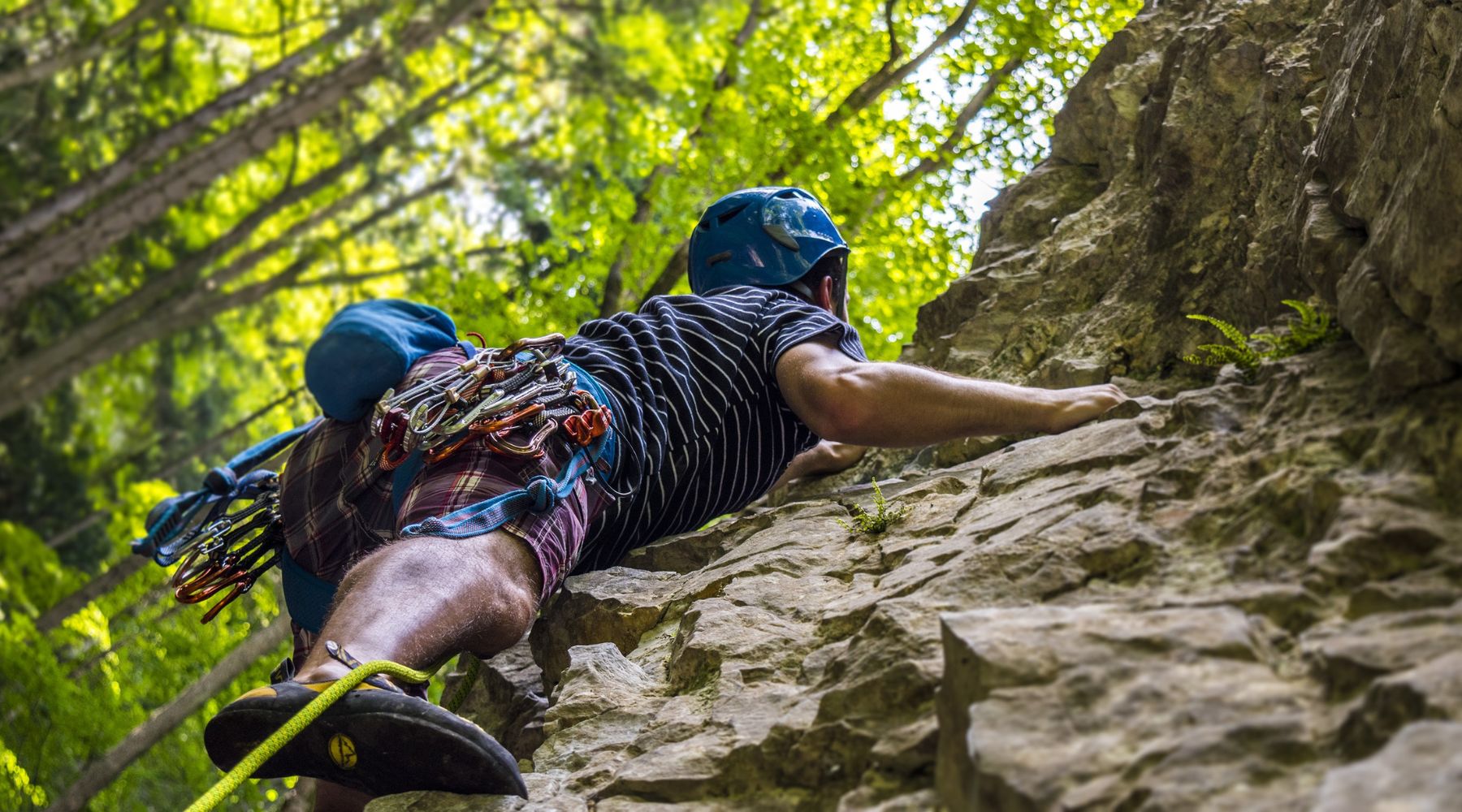Are you an avid rock climber? Looking to perfect your skills, climb higher than ever before, and challenge yourself in ways you never thought possible?
As awesome as it is to mix up your routine and improve on the climbing techniques you’ve been mastering for years, one thing that climbers often overlook is safety.
We know injuries can happen no matter how experienced and knowledgeable a climber may be; but did you know there are some common injuries associated with the sport that could be easily prevented if addressed properly earlier on?
In this blog post, we’ll dive into five of the most common rock climbing injuries faced by climbers of all levels—from beginner to advanced—and provide tips on how to ensure top-notch safety while conquering new heights!
Ankle Sprains
As any experienced rock climber will tell you, ankle injuries are an all-too-common occurrence in the exhilarating world of rock climbing.
Injuries can result from a variety of factors including twisting, awkward landings, and falls. This is the last thing you want to experience when you’ve been looking forward to a summer of scaling rock faces!
Symptoms of an ankle sprain might include tenderness and swelling around the ankle joint, difficulty bearing weight on the affected foot, and stiffness.
While there’s no foolproof way to prevent all ankle injuries, there are steps you can take to lessen your risk. Investing in quality climbing shoes that provide ample support and grip can make all the difference in preventing rock climbing injuries like this, as can practising good balance and proper landing techniques.
Pulled Muscles
Pulled muscles are common rock climbing injuries and can often be the most painful. Pulled muscles can happen because of a lack of stretching or improperly warming up before climbing, but they can also occur from overexertion or sudden movements while on the wall.
Common symptoms of a pulled muscle include pain, tenderness, and weakness in the affected area usually in the arms, shoulders or back.
The good news is that there are steps you can take to prevent pulled muscles when rock climbing.
One important step is to incorporate stretching into your pre-climbing routine, including stretches that target the muscles you will use while climbing.
Another helpful way to prevent pulled muscles is by gradually increasing the intensity and difficulty of your climbs, rather than pushing yourself too hard too fast.
By taking these measures, you can reduce your risk of experiencing a painful and frustrating pulled muscle when rock climbing.
Finger Injuries
As an avid rock climber, it’s important to understand the potential risks and injuries associated with the sport.
One common type of rock climbing injury includes finger injuries, which can result from overuse or falling. These injuries can range from minor cuts and scrapes to more serious conditions, such as sprains or fractures.
Symptoms of a finger injury can include pain, swelling, and difficulty gripping or holding objects. To prevent these types of injuries, it’s important to build up finger strength through specific exercises and stretches, as well as properly warm up before climbing.
Additionally, using the right equipment such as finger tape and climbing gloves can offer extra protection from the wear and tear of rock climbing.
Wrist Injuries
Wrist injuries are unfortunately common in this sport. When you’re scaling a steep rock face using your hands and fingers as your only anchor, it puts quite a bit of strain on your wrists.
The most common types of wrist injuries in rock climbing are sprains and strains, which can occur from overuse or sudden movements.
To prevent these injuries, it’s important to stretch your wrists and forearms before and after a climb and to use proper technique when gripping and pulling on holds.
Additionally, investing in a quality pair of climbing gloves or wrist supports can go a long way in protecting your wrists from injury. If you take these precautions, you’ll be able to continue climbing confidently and injury-free.
Shoulder Injuries
It’s important to identify the most common types of shoulder injuries that can occur during a climb. These include rotator cuff tears, labrum tears, and shoulder dislocations.
Rotator cuff tears are caused by repetitive overhead movements while labrum tears can occur when there is too much stress on the shoulder joint.
Shoulder dislocations are typically caused by a fall or a sudden jolt to the joint. Symptoms of these injuries include pain, weakness, and limited mobility.
To prevent these injuries, climbers can focus on strengthening their shoulder muscles through targeted exercises and ensuring proper form during climbs.
Additionally, using proper equipment such as supportive harnesses and regularly checking gear for wear and tear can also help prevent shoulder injuries during a climb.
Are Untreated Injuries Knocking Your Climbing Confidence?
Are you currently experiencing an injury that could put a stop to your rock climbing plans this summer?
Don’t let it stop you! The best thing you can do for your injury and your summer of scaling rock faces is to get it checked out and start on the path to recovery. The faster you identify the problem and start fixing it, the faster you can get back out there!
Throughout August we’re offering you the opportunity to come into our Durango clinic for a free injury screening. During your free injury screening, you will be able to talk to a member of our expert physical therapy team, find out the cause of your injury and explore the treatment options that best suit you and your recovery so we can get you back to enjoying exhilarating heights and climbs!
Fill in our simple web form to arrange your free injury screening. Alternatively, you can call our clinic at (970) 259-0574 and a member of the team can arrange your appointment.
Other Free Resources For Rock Climbers
Read Our Blog – Strength Training In Physical Therapy
Read Our Blog – Common Causes Of Heel Pain
On Social Media? Follow Us On – Facebook, Instagram, and LinkedIn

